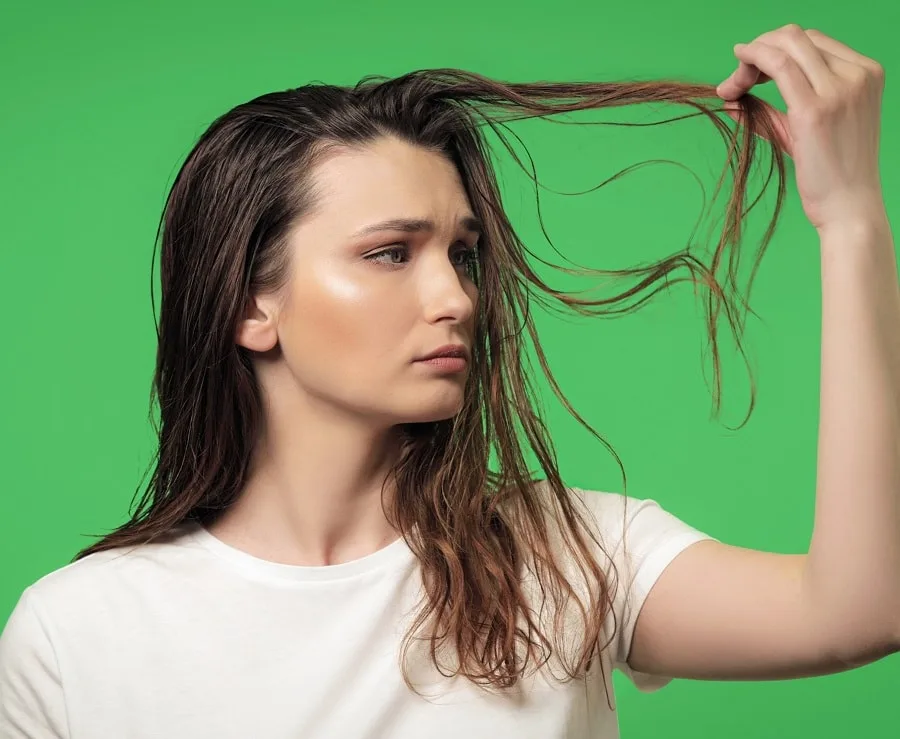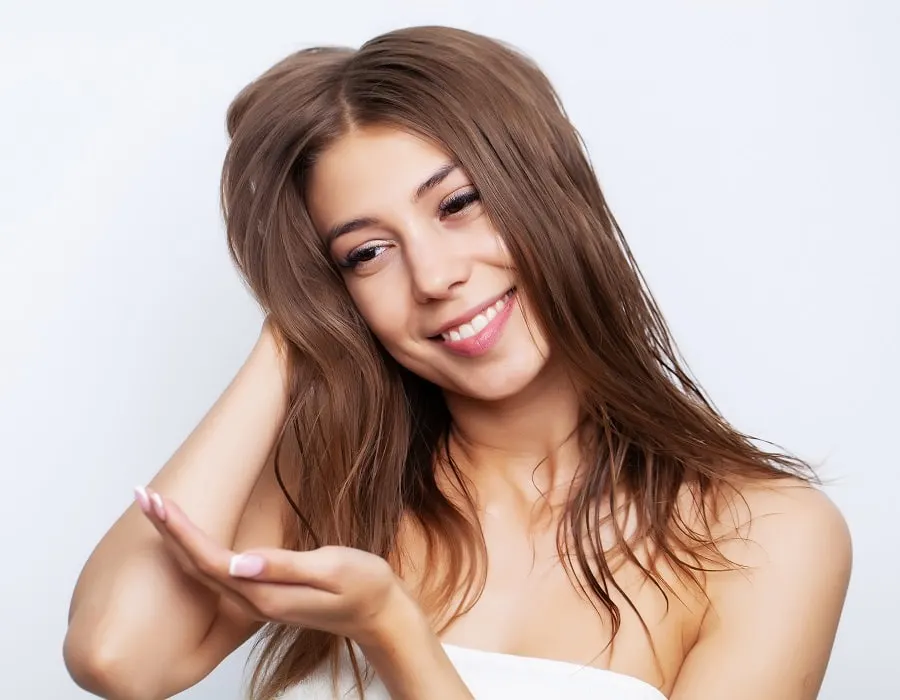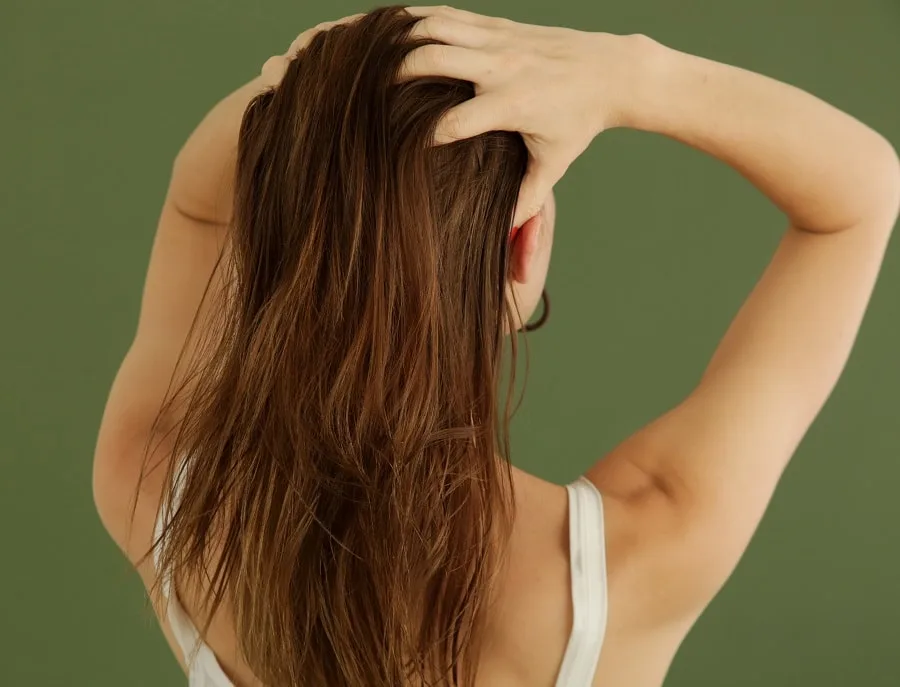So you are thinking about dyeing your hair and can’t wait to see those rich, vibrant tones on your strands. But a question pops into your head – should you apply hair in oil before applying the color?
It seems oils could help protect hair from drying out or getting damaged from all those strong chemical treatments.
However, you also don’t want any slippery oils preventing the dye from depositing evenly or fully saturating your locks!
Read this article to know the advantages and disadvantages of oiling hair before dyeing!
Can You Apply Oil Before Applying Hair Color?

You can apply hair oil before dyeing hair but do not apply oil immediately before dyeing.
Oil can interfere with the dye’s ability to properly penetrate or coat hair, potentially leading to uneven or unsatisfactory coloring results.
It’s usually best to dye hair that is clean, dry, and free of any products, including oils, for optimal color absorption.
However, if you have a particularly sensitive scalp or are using a harsh dye, a small amount of oil applied to the scalp (not the hair) can help protect against irritation.
How Long to Wait After Applying Oil Before Dyeing Hair?

You have to apply your hair oil 24-72 hours before dyeing your hair. The exact waiting period depends on the type of oil you’ve used, the health of your hair, and the hair color you desire.
For lighter oils like argan or jojoba, which are absorbed quickly, wait about one to two days (24-48 hours) before dyeing. If you’ve used heavier oils like coconut or olive, which take longer to absorb, a waiting period of two to three days (48-72 hours) is advisable.
If your hair is generally healthy, you might be able to dye it sooner, as healthy hair can better tolerate oil residue. However, for dry or damaged hair, it’s better to wait longer, allowing more time for the oil to nourish the hair.
When you’re going for a bleach or lighter hair color, it’s best to wait at least three days (72 hours) to ensure the oil doesn’t affect the dye’s ability to lighten your hair.
Generally, it’s recommended to wash your hair to remove the oil at least a day before dyeing. This ensures that your hair is free from any oily residue, which could interfere with the dye’s ability to properly penetrate the hair shaft.
Benefits of Using Oil Before Dyeing Your Hair

There are multiple benefits of putting oil before dyeing your hair, including:
Hydration
Oils both promote and lock in hair’s natural moisture, keeping your locks hydrated. Studies reveal that oil protects hair from damage. The hydrophobic nature of oil plays a main role in protecting hair from the harsh effects of dyeing, especially bleaching.
Most hair dyes contain harmful chemicals that seep into hair and damage its structure. Oiling will keep chemical-induced damage at bay.
Preserved Hair Structure
When you dye your hair, you remove proteins from the strands and compromise your hair’s overall health.
Experts recommend taking gaps between dyeing sessions to allow your hair structure to regain its strength.
Plant oils are great at protecting the hair shaft. Coconut oil, apart from hydrating hair has abundant fatty acid that prevents protein loss.
Fatty acid especially lauric acid is found in most oils and has a high affinity for hair proteins. Therefore, it penetrates the hair shaft and prevents protein loss.
Makes Hair Shiny
Sufficient hydration of the hair strand adds luster and shine to the hair. Adding a small amount of oil to your hair will boost its vibrance.
Frizz Control
Exposure to chemicals during hair dyeing can strip off the natural oils in the hair, making them vulnerable to becoming dry and frizzy.
Oil acts as a moisturizer and helps in frizz control. It prevents the hair from drying out and developing split ends.
Drawbacks of Using Oil Before Dyeing Your Hair
The most concerning drawback of applying oil before dyeing hair is, it can create a barrier on the hair shaft, which might prevent the dye from penetrating effectively.
Hair dye is formulated to work on clean, product-free hair. Using dye on oily hair can lead to uneven coloring or a lighter color than expected.
How to Use Coconut Oil Before Dyeing Your Hair?

As we mentioned earlier about applying coconut oil on the scalp, here are the steps to dye your hair with coconut oil in it:
Before applying coconut oil, wash your hair thoroughly. Then take coconut oil and warm it until it becomes liquid. Warm oil deeply penetrates the hair follicles.
Take a small volume of the oil and rub it gently on the scalp using your fingertips. Make sure you evenly spread the oil over the scalp. We suggest you apply only a small volume (just enough to coat the hair) because surplus amounts can make your hair greasy.
It is better to apply the oil a day or two before dyeing your hair for maximum absorption. Once on, do not wash off the oil. Apply the color while the oil is still in the hair, and enjoy healthy dyeing.
So, you can apply oil before coloring your hair but it is not recommended by many experts. However, there are both pros and cons of applying oil before dyeing your hair.
The advantages of oiling before dyeing include enhanced hydration and lesser protein loss induced by the penetration of harmful dyeing chemicals.
The con of oiling before dyeing is uneven color pays off, but that happens only when you apply excessive oil, causing greasy hair.
FAQs
The following are some frequently asked questions regarding dyeing your hair.
The best way to protect your hair to minimize the damaging effects of dyeing is to apply oil the night before the treatment. Applying a hair mask or leave-in conditioner can also help hydrate your hair.
If you feel your hair is dirty and needs cleansing, it is essential to wash it to remove any buildup that may interfere with the dye and prevent it from penetrating the hair cuticle.
